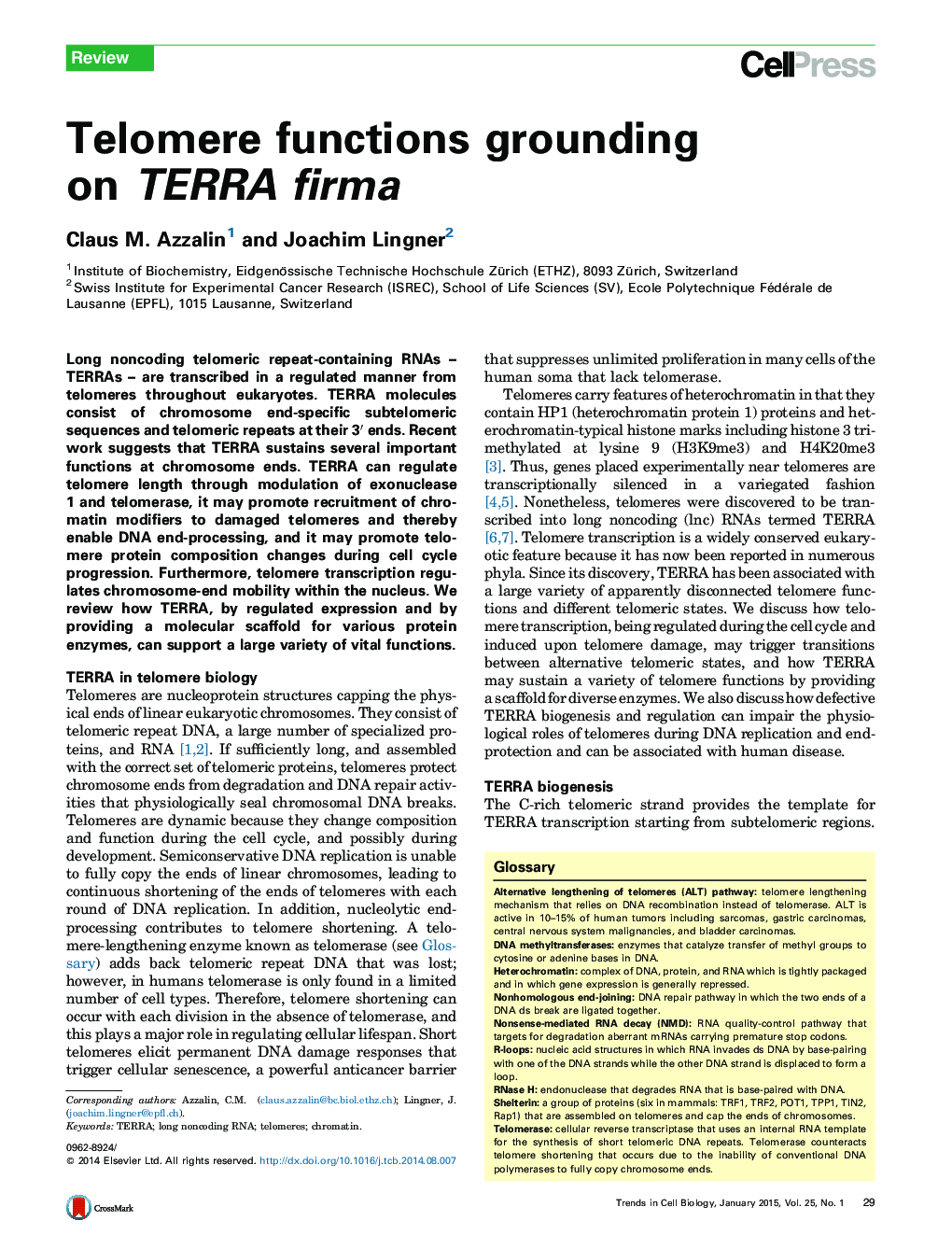| Article ID | Journal | Published Year | Pages | File Type |
|---|---|---|---|---|
| 2204418 | Trends in Cell Biology | 2015 | 8 Pages |
•TERRA expression is tightly regulated during the cell cycle and is induced upon telomere damage.•Changes in TERRA transcription and abundance may sustain telomere state transitions by promoting telomere motility and by providing a binding platform for various telomeric DNA and telomeric chromatin-modifying enzymes.•TERRA biogenesis and localization aberrations cause R-loops and telomere maintenance defects that are likely to be associated with disease.
Long noncoding telomeric repeat-containing RNAs – TERRAs – are transcribed in a regulated manner from telomeres throughout eukaryotes. TERRA molecules consist of chromosome end-specific subtelomeric sequences and telomeric repeats at their 3′ ends. Recent work suggests that TERRA sustains several important functions at chromosome ends. TERRA can regulate telomere length through modulation of exonuclease 1 and telomerase, it may promote recruitment of chromatin modifiers to damaged telomeres and thereby enable DNA end-processing, and it may promote telomere protein composition changes during cell cycle progression. Furthermore, telomere transcription regulates chromosome-end mobility within the nucleus. We review how TERRA, by regulated expression and by providing a molecular scaffold for various protein enzymes, can support a large variety of vital functions.
